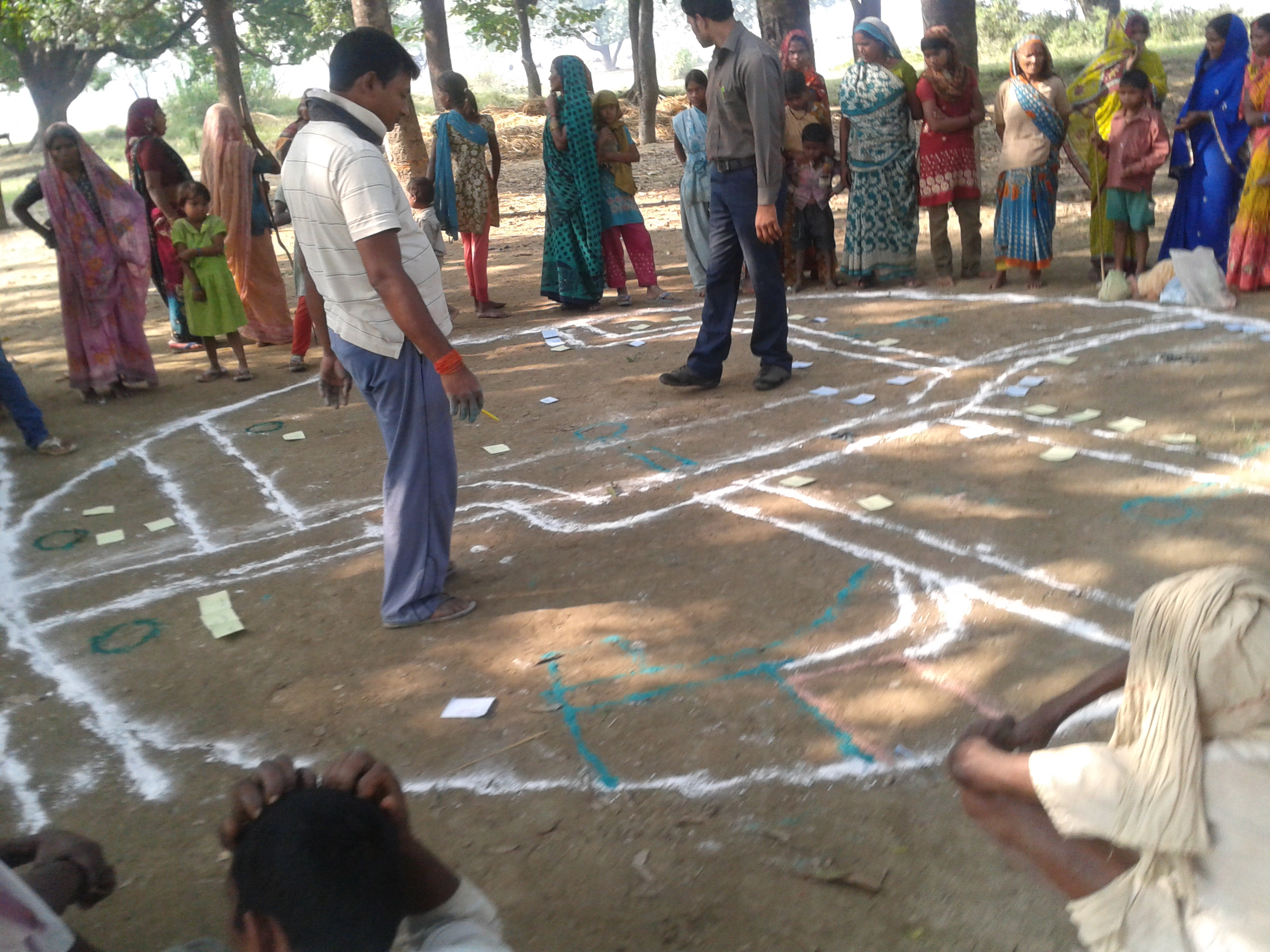Every year, 188,000 children under five in India die due to diarrhea-related illnesses. This catastrophic burden on children’s health is largely due to the fact that over a third of the Indian population defecates in the open. Open defecation (OD) also has strong gender impacts; women feel constrained to relieve themselves only under the cover of darkness, for reasons of privacy and to protect their dignity. In Uttar Pradesh (UP), rapes and molestation incidents commonly occur while women are out at night. Detrimental health impacts of open defecation are even more significant in population dense areas, like UP (828 persons per km in the district; Census 2011).
Community Led Total Sanitation (CLTS): An approach that works?
Despite many efforts from the Indian government, the problem of OD persists, largely due to the common belief that defecating in the open is natural and healthy and that building a latrine in the house brings impurity to it. It has not been well established that the root cause of the problem is not the unavailability of toilets but the unwillingness of the rural people to embrace the change. Hence while doing the fieldwork in UP as a TCI scholar, I realized, in collaboration with Grameen Development Services (GDS), that social norms and habits will need to be altered if open defecation is to be successfully combated. Simply building more toilets will not do the job.
Community led, demand driven interventions to combat open defecation practices, like Community Led Total Sanitation (CLTS), are different from other approaches of sanitation promotion in the sense that they focus not on mere construction of toilets and saturating an area/village with toilets, but on bringing about behavioral change in the communities, making community members use the toilets and stop defecating in open, and consequently, make their village or hamlet open defecation free (ODF).
In collaboration with GDS, we will be implementing CLTS in UP in various phases before and after the construction of toilets. The first stage of the process is arriving in the village, explaining the purpose of the visit and establishing rapport with the community. With GDS as our partnering organization, and with their widespread liaisons in these villages, the program is able to hit the ground running from day one and will begin with the following procedures, following the CLTS Handbook:
Defecation Area Transect or “The Walk of Shame”
This consists of a walk with the villagers to the places where they usually defecate. According to the CLTS handbook, the objective of this walk “is standing in the OD area, inhaling the unpleasant smell and taking in the unpleasant sight. Experiencing this in a new collective way, accompanied by a visitor to the community embarrasses the villages and becomes the key trigger for mobilization.”
Defecation Mapping
Mapping of defecation areas entails facilitating the community to draw the map of their village on the ground demarcating the fields, rivers, schools, houses, etc. using different colored chalks and small papers. Then community members are asked to fill the map with a yellow chalk illustrating where people, then animals, defecate; the process gradually fills the whole map with yellow chalk. The ubiquity of the yellow nudges the community into self-realization about the condition of their villages.

Core Fecal Counts
This step involves determining and discussing the volume of fecal matter accumulated in a village. Here the facilitators calculate the amount of human excreta being produced by everyone every day. The figure is multiplied by the number of individuals to produce a single numeral for the entire community. The number is converted into truckloads to provide a vivid graphic visual that surprises the community members.
Pathway Demonstration
The facilitator asks the villagers for a glass of drinking water. Instead of drinking it, the facilitator pulls a hair, dips it in the excreta and then back in the glass of water. Everyone is in turn asked if they would drink it. An emphatic “no” follows soon. Facilitators point out that the flies that sit on their food have six serrated hair-like feet. This information helps community members recognize that they indeed eat food after fanning off the flies sitting on top of it.
Generally, communities react strongly to this training and immediately try to find ways to change the practice of OD through their own effort. They are encouraged to use local materials to construct kuchha (temporary) toilets.
Follow up
The next part of the CLTS toolkit is an intense follow-up over the period of 1 week to 1 month. The facilitators identify the men and women of the village who emerge as natural leaders during the training and an entire array of diverse and innovative penalties are devised to “name and shame” those who repeatedly don’t use the toilets.
The high incidence of OD combined with high population density makes for a lethal mix so far as the nutrition (or, malnutrition) status of children is concerned. Given the conundrum of extant open defecation in India, and more specifically in UP, the need to successfully address it cannot be over-emphasized. The gravity of the sanitation problem demands serious attention with robust, long-lasting, and replicable solutions. CLTS is a cost-effective method that mobilizes the social norms in the community, motivating community members to become ODF.
The author expresses her gratitude to Tata Cornell Institute (TCI) at Cornell University for their gracious funding for this study and Grameen Development Services in U.P, India for their unfaltering support.


Such a great article.
Awesome work Payal Seth.
Excellent n superb approach to SWACH BHARAT.
The respective problem has been raised by many but never with such a depth. Root cause & effective measures that should be taken are focused. Hats off to such an intense study.
Wonderful thought.
It will help in drastically change in rural areas regarding open defecation.
Congratulations to Payal Seth and team.
Ms. Payal Seth……hopefully this project is going to play a positive revolutionary role in combatting this shameful walk of people of India…..Keep up the great job